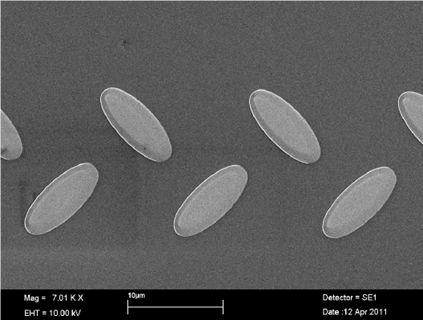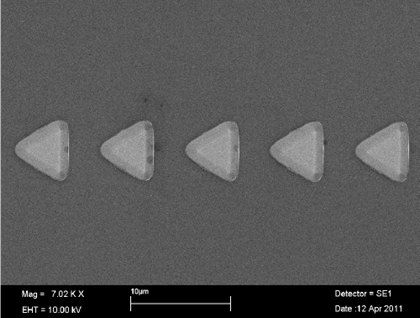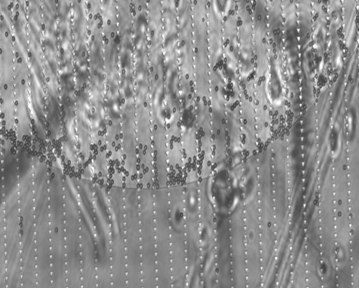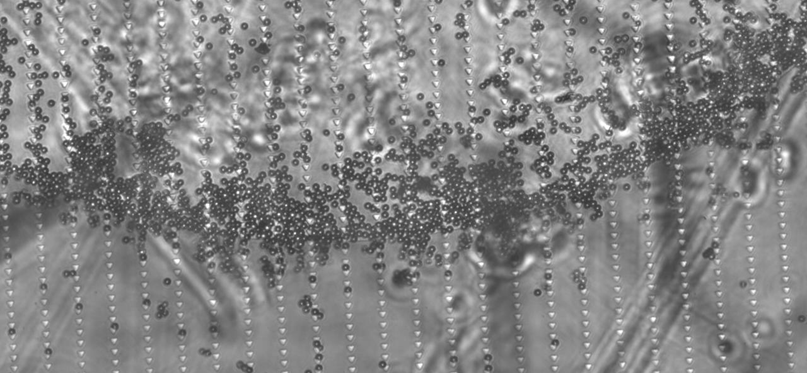Experimental Magnetism
Solid State Physics, Department of Engineering Sciences, Uppsala University
Contact: Prof. Peter Svedlindh
www2.angstrom.uu.se/magnetism/
The experimental magnetism part of Solid State Physics consists of 10 researchers with backgrounds in physics and engineering physics. The group has an ambition to be interdisciplinary within natural science, and collaborates with research groups within physics, chemistry, surface biotechnology and molecular medicine. The group is an active partner in the Molecular Nanodiagnostics Center (MND) formed at the Department of Engineering Sciences. The MSL facilities are important for the work of the group, as shown in the project example given below. Together with research groups at the Department of Physics and Astronomy, the group also has the ambition to form the Ångström Center for Magnetization Dynamics. The new project’s need for nanostructuring facilities will to begin with be provided by Myfab. However, a major boost for the proposed magnetization dynamics activities would be the creation of a Nanolab within MSL equipped with a new e-beam lithography equipment, an existing nano-imprinting system and equipment in general which would provide users at MSL with a process line for nanostructuring of a wide variety of materials.
A project on Arrays of thin film magnetic elements applied to biotechnology is described below. Within this project a novel method of controlled transport of proteins immobilized on micrometer-sized magnetic beads in a lab-on-a-chip environment has been developed. Bead motion is controlled by lithographically made magnetic elements forming transportation lines in combination with an applied in-plane rotating magnetic field. In this way, transport of attomole amounts of proteins is controlled with micrometer precision (LE Johansson et al., Lab on a Chip, 2010, vol. 10, pp. 654-661). The method has also been further developed to enable measurements of molecular reactions.
Fabrication of Magnetic Microchips
A fabrication process for magnetic microchips has been developed. The process includes the following steps:
1) The (100)-silicon wafer is put in oxygen atmosphere and elevated temperature until a 100 nm thin thermal oxide is grown on the surface.
2) The wafer is covered with photoresist, which is lithographically patterned.
3) A 75 nm thin film of the soft magnetic material Permalloy (80% Ni + 20% Fe) with 10 nm titanium as adhesion layer is evaporated on to the wafer and the pattern is transferred to the film through a lift-off process using acetone. Patterns include lines of triangular or elliptical magnetic thin film elements with feature sizes typically in the micrometer range (see figure below).
4) The silicon dioxide is covered with a second layer of patterned photo resist.
5) A 10 nm thin gold layer with 10 nm titanium as adhesion layer is evaporated on to the patterned photo resist. The pattern is transferred to the film through a lift-off process using acetone. The gold pattern will typically have feature size of several hundreds of micrometer.
6) The wafer is finally diced into 0.5 by 0.5 cm sized chips.
7) Droplets of antibody are put on the gold dots. To assure a clean gold surface the chips are treated with oxygen plasma before functionalization


Examples of magnetic thin film element geometries.
Magnetic Beads
Commercially available monodisperse Micromer® -M beads (Micromod Partikeltechnologie GmbH) are used in the investigations. Each bead consists of a core of maghemite (?-Fe2O3) nanoparticles embedded in a styrene-maleic acid-copolymer matrix with amino function on the bead surface. The beads have an average diameter of 4.9 µm with a standard deviation of 0.2 µm. The beads are functionalized with proteins prior to transport experiments.
Transport Experiments
A functionalized microchip is placed in the fluid cell after which functionalized beads are led onto the chip through a tubing system. The liquid suspended beads quickly reach the chip and an in-plane rotating magnetic field of 10-20mT is applied making the beads wander along the lines of Permalloy elements. If the biological substance on the gold surface of the chip does not naturally bind to the substance on the beads, the beads will unaffectedly pass over the entire chip. If, on the other hand, there is a possibility for the two substances to interact the beads will, in some degree, be trapped when they reach the gold surface. Depending on the affinity between the two substances the beads will be able to travel different lengths on the gold before they bind.
Some Results
Four different experiments were carried out to prove the principle of the method. Beads with biotin/avidin were transported over a chip with biotin on the gold. For a negative reference, also beads with biotin were transported over a biotin chip. Beads with lactalbumin (LALBA) were transported over a chip with anti-LALBA on the gold. Here the negative reference consisted of transporting LALBA-functionalized beads over a chip with LALBA also on the gold. The results look very promising. The biotin covered beads are transported from one end of the chip to the other almost completely without any unspecific interaction. Also the biotin/avidin coated beads could easily be transported on the non-functionalized silicon dioxide but when they reach the biotin coated gold and find an unoccupied binding site they are trapped and could be transported no further, (see figure below). As long as there are open spaces along the rim of the gold circle newly arrived beads can pass by and find free binding sites further in on the gold. After a while all the binding sites at the edge of the gold has been taken and no new beads can pass. As a final step, all beads not specifically bound to the functionalized gold are rinsed off.



Biotin/avidin coated beads trapped by a biotin functionalized gold surface; after 20 seconds of transport (top), after 6 minutes of transport (middle) and after 14 minutes of transport (bottom).
The experiments involving LALBA and anti-LALBA turned out much the same. The beads with LALBA where easily transported from one end to the other on a chip functionalized with LALBA. When beads from the same batch instead where transported on a chip with gold functionalized with anti-LALBA the beads only made it as far as to the edge of the gold. A comparison between the results from the avidin/biotin – biotin experiment and the results from the LALBA – anti-LALBA experiment suggest that the affinity between LALBA and anti-LALBA is lower than that between avidin and biotin. This suggestion is based on the fact that the beads in the latter experiment, on average, travels much further on the gold before binding.
Further Development of Magnetic Microchips
Arrays of magnetic thin film elements are also being developed to create a solid-state support for molecular reactions. An array will be part of a microfluidic platform, and pillars of micrometer sized magnetic beads, acting as the solid-state support, will form on the arrays elements. The beads will be functionalized with circularizing oligonucleotide probes (padlock probes) for recognition of the target DNA, and in case of target recognition, the probe-target complex will be amplified by the rolling circle amplification mechanism. The volume amplified DNA coils will be used in the volume-amplified magnetic nanobead detection assay, VAMNDA (M Strömberg et al., Nano Letters, 2008, vol. 8, pp. 816-821).